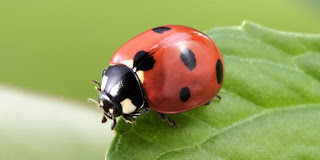MICROBES AS BIOCONTROL AGENTS
Biocontrol -- use of biological methods for controlling plant diseases and pests.
Why biocontrol?
Because- Chemicals, insecticides and pesticides -- extremely harmful to human beings + pollute our environment.
use of biocontrol -- greatly reduce our dependence on toxic chemicals and pesticides.
Biocontrol agents are which are useful in controlling plant diseases and pests are-
- The ladybird, a beetle with red and black markings and dragon flies are useful to get rid of aphids and mosquitoes respectively.
- Trichoderma species are free-living fungi found in the root ecosystem these are effective as biocontrol agents of several plant pathogens.
- Baculoviruses are pathogens that attack insects and other arthropods
- majority of baculoviruses used as biological control agents are in the genus Nucleopolyhedrovirus.
MICROBES AS BIOFERTILIZERS
Biofertilizers -- enrich the nutrient quality of the soil.
bacteria, fungi and cyanobacteria.
Some microbes used as biofertlizers are-
- Symbiotic Rhizobium form root nodules in leguminous plants and fix atmospheric nitrogen into organic forms, which is used by the plant as nutrient.
- Free living bacteria like Azospirilium and Azotobacter fix atmospheric nitrogen, hence increases nitrogen content of the soil.
- Many members of the genus Glomus form Mycorrhiza, which is the symbiotic association of fungi with roots of the plants.
The fungal symbiont in these associations absorbs phosphorus from soil and passes to the plants.
Plants having symbiotic association show resistance to root-borne pathogens, tolerance to salinity and drought, and an overall increase in plant growth and development.
Cyanobacteria are autotrophic microbes which can fix atmospheric nitrogen. Example - Anabaena, Nostoc, Oscillatoria
Blue green algae also add organic matter to the soil and increase its fertility























No comments:
Post a Comment